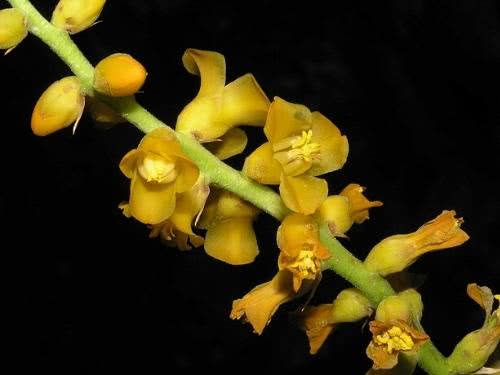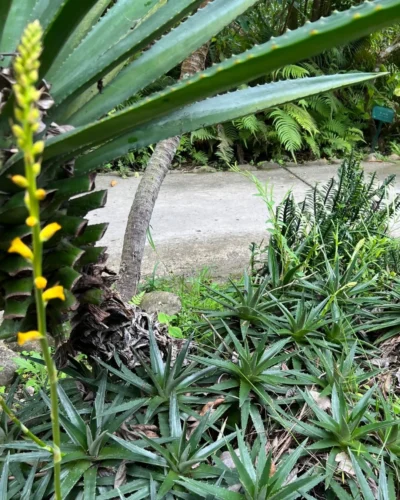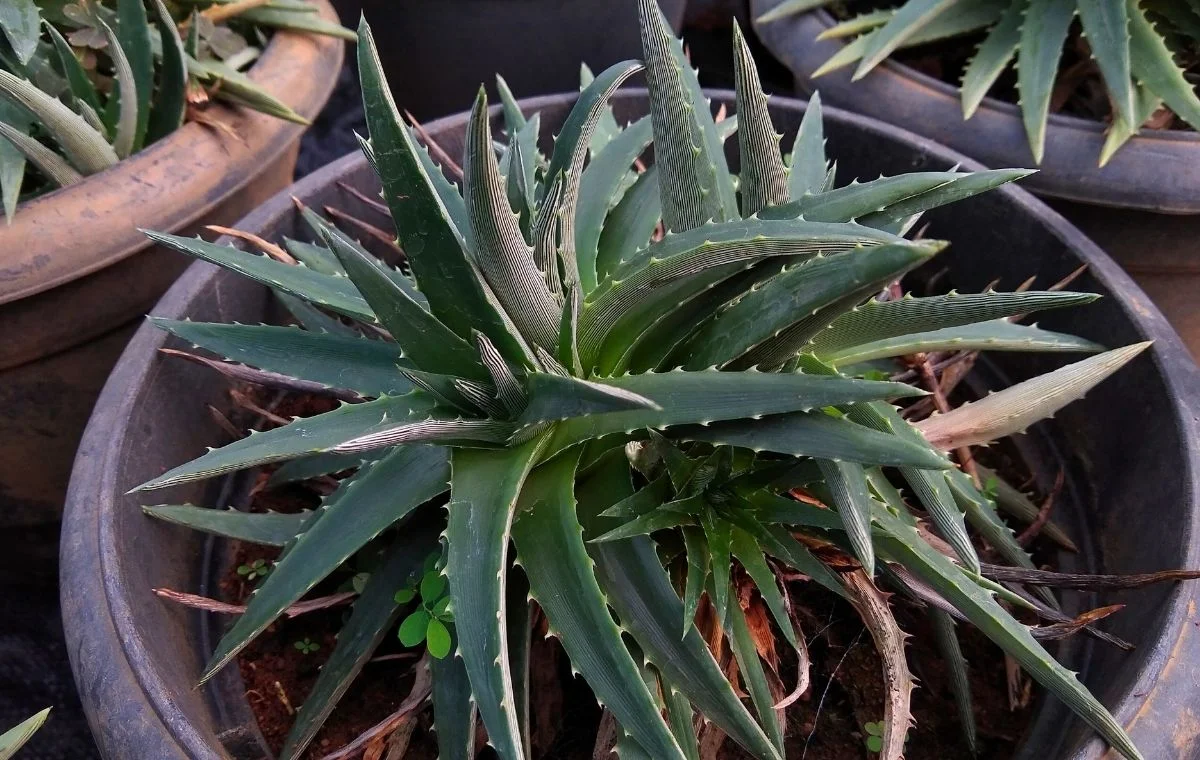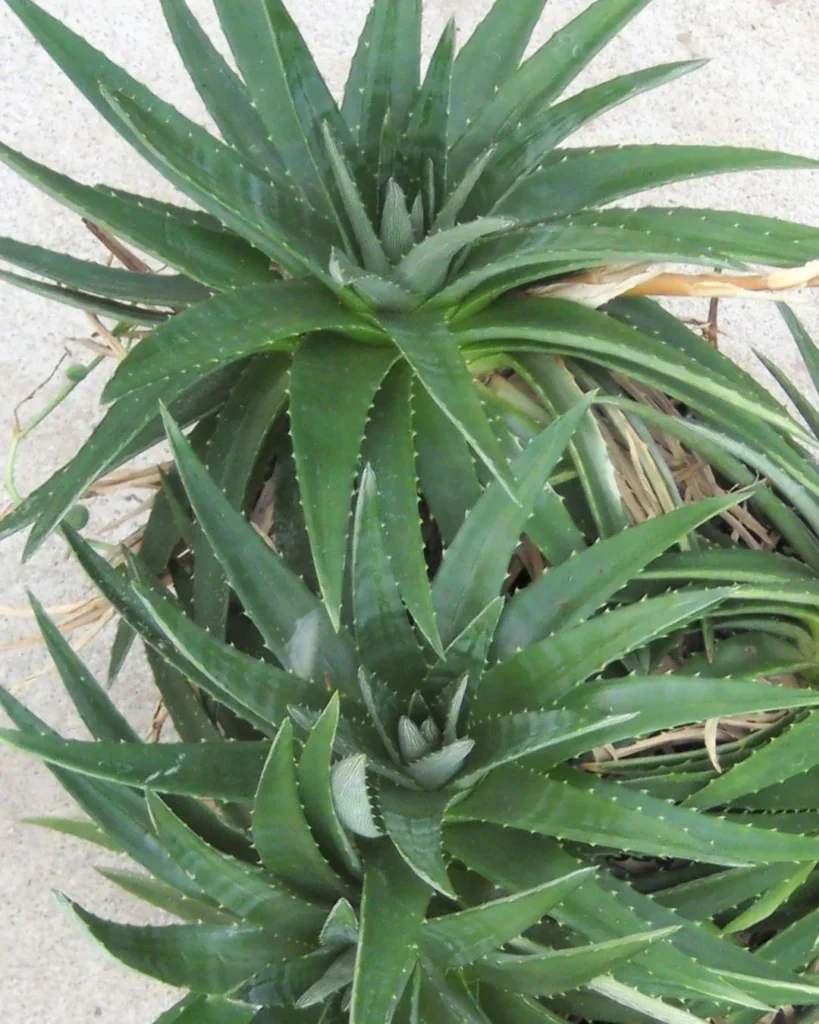The bromelia Sawblade (Dyckia brevifolia) is a perennial plant native to the state of Santa Catarina, Brazil, known for its ornamental foliage. It is a rheophyte, meaning it thrives in fast-flowing streams and rivers, where its roots firmly attach to crevices between rocks, making it prone to frequent flooding. It forms dense rosettes that can reach up to 7.87 inches (20cm) in height, with succulent to leathery foliage covered in scales. Due to these characteristics, some might mistake it for succulents from the Aloe genus.

Photo by 阿橋 HQ
The leaves have spines along the margins, are recurved, and are green in color, sometimes taking on a grayish hue depending on the variety due to the presence of scales. There are cultivars with varying shades of green and other variations, such as D. brevifolia subidenses, ‘Ilha da Cotia,’ and ‘Izabel.’ Some varieties have a more or less yellowish center, like ‘Moon Glow,’ ‘Yellow Glow,’ and ‘Golden Glow.’
The inflorescence emerges in spring with thin, erect side stems, reaching up to 31.5 inches (80cm) in height. They are racemose and have limited ornamental value, displaying bell-shaped, orange, or yellow flowers, attracting bees and hummingbirds. After flowering, the plant slowly declines and produces new offsets from its base, forming a dense cluster of plants over time.
In landscaping, the Sawblade is ideal for rock gardens or ground cover. Its lush foliage adds a rustic, exotic, and tropical touch to the garden. It can also be planted in pots and planters, either on its own or alongside other succulents, enhancing its rosette arrangement and leaf texture.
Additionally, it can be used as a border plant to mark pathways, like entrances to homes or establishments. Its sculptural appearance complements desert-inspired gardens with rocks and other xerophytes. Maintenance is simple and involves annual replanting to maintain growth and vigor.

It thrives in full sun or partial shade and prefers a tropical to subtropical climate. These bromeliads particularly like sandy, moist, well-draining soils enriched with organic matter and slightly acidic. They are adaptable to varying environmental conditions, enduring both dry and rainy periods. However, since they originate from riverbeds, they thrive when provided with ample moisture for optimal growth.
During dormancy, such as in winter and dry periods, the thick foliage of the Sawblade may become somewhat wilted, but it quickly recovers with the onset of the first rains. Fertilization is best done in early spring, preferably with organic fertilizers. Propagation can be achieved through seeds, but more commonly, new offsets are separated from the mother plant.


